Have you been invited to go stargazing? Or are you just curious about what’s out there? Without some basic information, it can seem overwhelming. It could even stop you from enjoying yourself.
The good news is that the experience of stargazing is fantastic and cheap. It provides relaxation and comfort. You’ll feel more grounded and have a sense of connection to the rest of the universe.
Your agenda may be full of things to do, people to see, and meetings to attend. Sometimes, you feel like taking it a little easier. You may be looking for a chance to disconnect. This is especially true during nights when the stars come into perfect view.
If this sounds appealing to you, then you’ll like stargazing. Stargazing is a fantastic way to relax and enjoy yourself.
If you’re interested in going stargazing, keep reading this ultimate stargazing guide. It can be cheap and doesn’t need a ton of equipment. All you need is a little information.
I’m often asked, “What do you need to go stargazing?”
In this article, you get
25 quick tips for a perfect night of stargazing
An understanding of light pollution and the importance of dark skies
A look at special equipment you may want for stargazing
By the end of this article, you’ll have all the info you need to go stargazing.
Let’s dive right in.
Recommended For You
Stargazing Guide: Key Topics
Get ready to expand your celestial knowledge and deepen your appreciation for the captivating world of stargazing.
The bulk of this article is dedicated to the topic of what you will need to go stargazing. Each of the sections below this one highlights one or more key things you’ll need to explore the night sky.
Before looking at the below list, you may wish to consider reviewing some basic aspects, like whether stargazing is a hobby, discover why constellations remain unchanged, the intriguing reasons why constellations exist, and the sheer joy that stargazing brings.
If you’re brand new to stargazing and concerned for your safety, then read my article Is Stargazing Safe?
Or you may wish to unravel the mysteries of why some people can’t see constellations or whether you can see the same constellations in different countries, explore romantic stargazing experiences, learn how to describe the enchantment of the night sky, uncover the naked-eye visibility of the magnificent Milky Way, and know when is the best time to see stars.
Let’s now switch to the main focus of this article, which is to understand what you’ll need to go stargazing.
FREE STARGAZING CHECKLIST
My 5-page Stargazing Checklist will enhance your astronomical observations.
Follow this free checklist to navigate the night sky with confidence, clarity, and a sense of preparedness for a rewarding stargazing experience.

A DARK NIGHT SKY
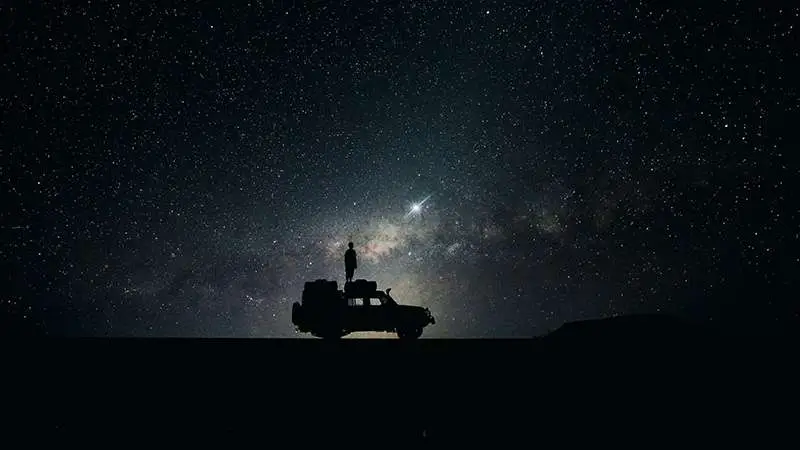
A clear night sky is essential for stargazing. Light pollution from your city can make it difficult to see the stars. Because of this, there are a few things you can do to avoid light pollution and enjoy a dark night sky.
If you’re staying local, look for an open area away from streetlights and buildings, like a State Park. This will help reduce the amount of artificial light you’re needing to look through, making it easier for you to see the stars.
If you are traveling, a little preparation will go a long way. For example, you could plan your trip to include one or more Dark Sky Reserves. These are designated areas that have very little artificial light.
They are perfect for stargazing and offer an unobstructed night sky view.
LIGHT POLLUTION MAP

Light pollution maps are beneficial in planning your trip or seeing how much light pollution is near where you live.
The darker the area on the map, the darker the night sky will be at that location. You’ll have the best chance of seeing the stars at the darkest locations on the map.
The yellow and orange regions are still reasonably dark, but there will be light pollution from nearby cities. The red and white areas are heavily polluted, making it difficult to see anything but the brightest stars.
My recommendation is to stay away from the red and white areas.
The map only shows light pollution from artificial sources. In other words, artificial light, such as streetlights and buildings. There are natural sources of light pollution, such as the full Moon, that you’ll want to avoid, if possible.
INTERNATIONAL DARK-SKY ASSOCIATION
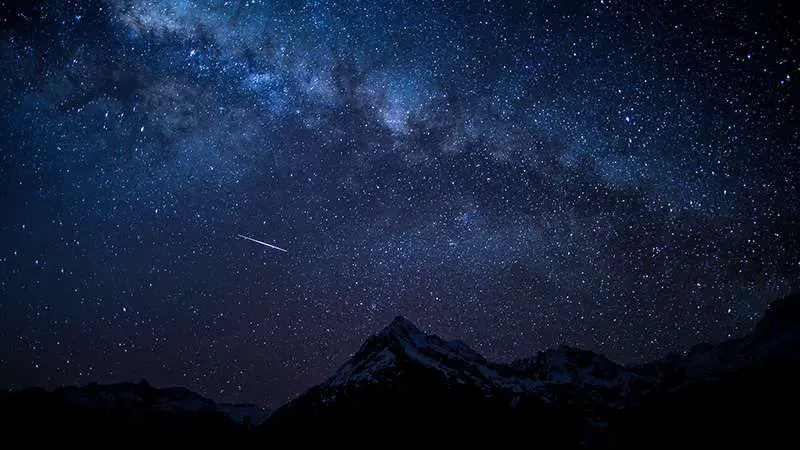
The International Dark-Sky Association was set up in 1988 to fight light pollution and protect the night sky. They work with municipalities to create darker skies by helping to enact lighting policies.
Becoming an International Dark Sky Community requires the municipality to have quality outdoor lighting ordinances and an education program for the community on the importance of dark skies.
Light pollution has many adverse effects. To learn more about light pollution, read my article Effects of Light Pollution.
To go stargazing, you don’t need much beyond your own two eyes. But going to a Dark Sky location will give your eyes the best chance of seeing the Milky Way and other celestial objects.
INTERNATIONAL DARK SKY PARKS

There are over 100 International Dark Sky Parks globally. These locations have exceptionally dark skies, which protect wildlife and natural heritage. These locations are expressly set up for public enjoyment.
Some famous Dark Sky Parks in the US include:
- Joshua Tree National Park in California
- Death Valley National Park in California
- Grand Canyon National Park in Arizona
- Arches National Park in Utah
- Bryce Canyon National Park in Utah
- Rocky Mountain National Park in Colorado
- Everglades National Park in Florida
HOW TO STARGAZE

In a nutshell, stargazing is simple. You go outside on a clear night and avoid any trees or buildings that might block your view. Once you find a spot, lie down and look at the stars.
The sky is the ultimate art gallery just above us.
Ralph Waldo Emerson
It doesn’t need to be any more complicated than that.
Don’t worry; I’ll get into more details in this article.
I’ll be sharing with you how to know what you’re looking at and what tools you can use to help you find something specific.
The stars are visible to the naked eye. If you want a better view, you can use binoculars or a telescope, but these are unnecessary.
WHERE TO GO STARGAZING
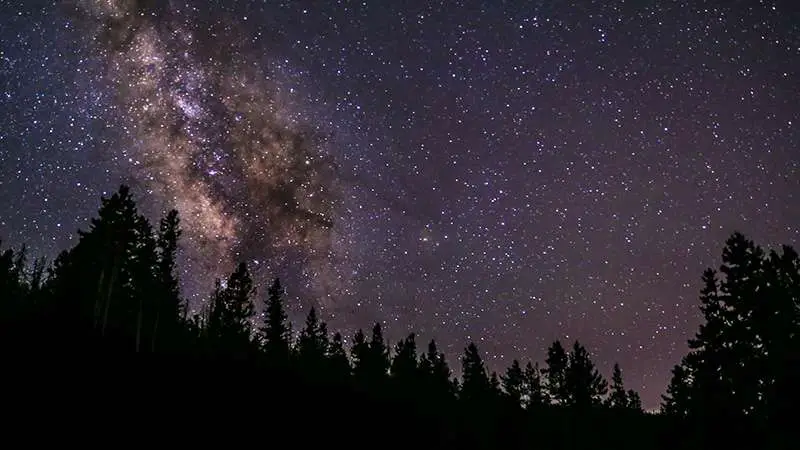
You don’t need to go anywhere special to go stargazing.
All you need is a clear night sky and some patience.
If you find a dark spot away from city lights and give your eyes about 15-20 minutes to adjust to the darkness, you will be able to enjoy the show!
The only thing necessary for stargazing is a clear night sky. Try to find an area away from city lights — a site with little or no light pollution.
National and State Parks are often great places to go stargazing. Many of them have special events and ranger-led programs specifically for stargazing.
Often, amateur astronomy clubs from the area volunteer to organize a star party. You will be able to look through their telescopes. But generally, a telescope is not required for stargazing.
If you need help figuring out where to start, you can use the light pollution map to find dark skies near you.
DO YOU NEED TOOLS LIKE APPS AND TELESCOPES?
There are some helpful tools if you want to get into stargazing seriously.
Even if you’re just starting, these tools can help you get the most out of your stargazing experience.
ASTRONOMY APPS
Apps like Star Walk and Sky Guide can help you identify stars and constellations in the night sky.
These apps are free to download, and I recommend you choose one, download it, and practice using it before going to your stargazing site.
My personal favorite is Stellarium.
TELESCOPES

If you want a close look at celestial objects, then a telescope is a must.
Many different types of telescopes are available on the market, so it’s essential to do your research before making a purchase. If you’re brand new to the world of telescopes, you can read a few articles I’ve published about them.
- Refractor Telescope vs Reflector
- Dobsonian Telescope vs Newtonian
- Can You See Planets with a Telescope
- Can You See Mars with a Telescope
- Can You See Saturn with a Telescope
But even if you don’t have fancy equipment, stargazing can still be fun and rewarding.
Even if you only have some binoculars at home, grab them. Or ask a friend or neighbor to borrow a pair.
WHAT DO YOU NEED TO GO STARGAZING?
Assuming you’re not planning on spending an entire night outdoors, you’ll need the following items to make your stargazing experience more comfortable.
CLOTHING
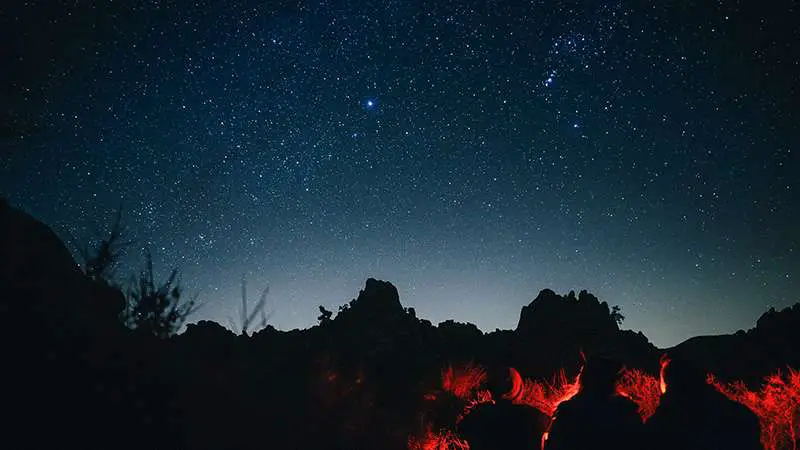
It can get cold at night, even if the day is hot. It’s much easier to cool off at night than to try to get warm, so bring extra clothes and be prepared to put them on.
Be sure to dress in layers. You can always take off a layer or two if you get too hot.
HEADLAMP

It’s dark out there! If you have a flashlight, then that will help you from tripping on something you might not be able to see.
Even better is a headlamp. This way, your hands will be free to carry other important things or to help brace yourself if you need to climb over rocks or around bushes. The white light from flashlights and headlamps is good to light your way but can impair your night vision.
If you can set the headlamp to a red light, your eyes will be able to adapt better to the darkness. You’ll be able to see more of the stars once you arrive at your destination.
Walking in red light will be a little strange, but you’ll get used to it quickly.
FUEL AND HYDRATION
I don’t know what it is, but I get hungry whenever I’m stargazing.
It’s really nice to bring snacks and something to drink.
Even better, plan a picnic. Having a picnic under a sky full of stars is very romantic. It might seem strange to picnic in the dark, but I promise you the experience is something you’ll remember for a long time.
BLANKET
When the temperature drops at night, often, the ground will get wet from humidity. Having a blanket will keep you dry and warm.
Some people bring lawn chairs, but I prefer to bring a blanket.
There’s something special about lying down on a blanket and looking up at the stars.
Being connected to the Earth while looking up at the Heavens makes me feel more connected to the Universe.
YOUR FAVORITE APP

You’ll want to ensure you’ve downloaded and know how to use your favorite App.
Also, you’ll want a fully charged mobile phone or tablet to ensure it works out there.
You could use a star chart or a printed piece of paper showing you a night sky map, but I prefer more modern Apps on a mobile device.
Most Apps allow you to view the sky through augmented reality, which means you can view the App and the night sky simultaneously. This helps you line up what you see in the sky with what the App is telling you is there.
This makes the whole experience more enjoyable.
SLEEPING BAG AND TENT
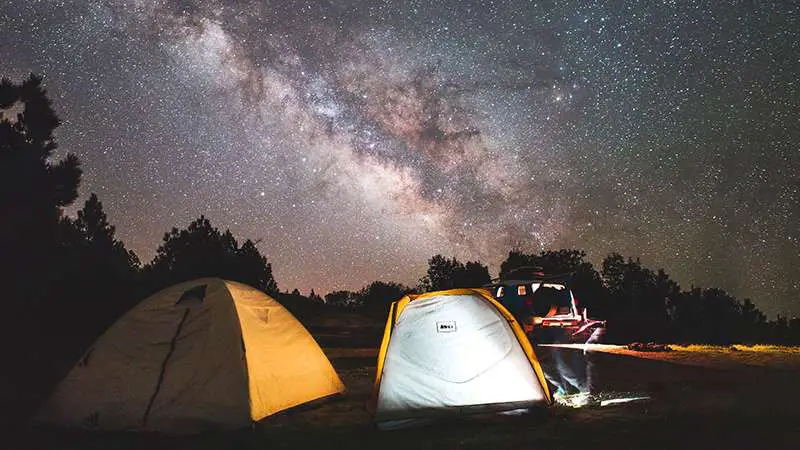
If you’re planning to spend the night, or even most of the night, consider bringing a sleeping bag and tent.
Depending on where you go, tents may not be allowed, so make sure you check beforehand.
BUG SPRAY
Bug spray is always good and will depend on where you’re going stargazing.
If it’s near a lot of water or the air is full of moisture, then having bug spray will allow you to relax more to enjoy the experience.
STARGAZING: EVERYTHING YOU NEED TO KNOW
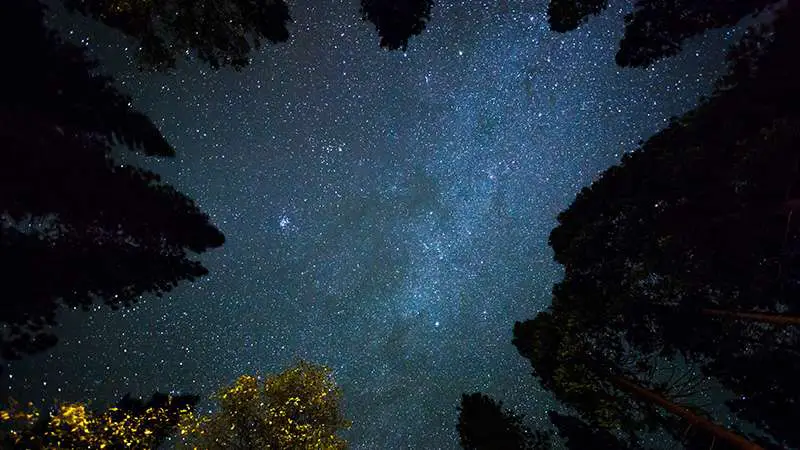
One of the most beautiful things you can do is go outside on a clear night and look up at the stars.
It’s a great way to relax and appreciate our universe. Here are even more detailed tips for enjoying the experience.
START BY LOOKING UP
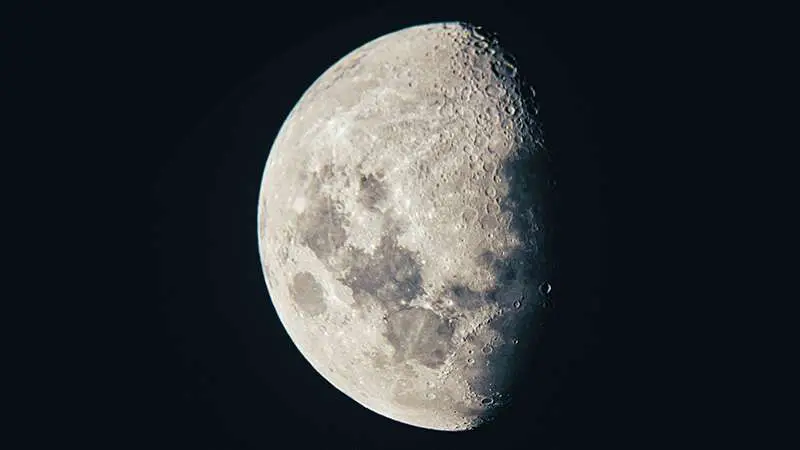
To begin with, you can look for some of the following things.
The Moon: our nearest neighbor is pretty easy to spot, and its changing phases make it enjoyable to watch over time.
Major constellations: there are many constellations in the night sky. Ursa Major (the Big Dipper) is the most well-known.
Stars: while they may all look similar to the naked eye, there is a wide variety of stars. With binoculars or a telescope, you can see that some stars are more colorful than others.
Planets: depending on where they are in their orbit, you might be able to see some. Your App will help you find them.
FIND THE BIG DIPPER

The Big Dipper is easy to find, even for beginner stargazers.
To find the Big Dipper, look for the North Star, also known as Polaris.
It will be directly North. You can use your mobile device’s compass to ensure you’re facing North.
The Big Dipper will be in the shape of a giant soup ladle. Depending on the time of year, it will be somewhere in the Northern sky circling Polaris
If you need help finding a big soup spoon, then it’s time to use your App to help you find it.
First, try to find Polaris. From there, it should be easy to find the Big Dipper using your App.
GET TO KNOW THE STARS YOU’RE LOOKING AT
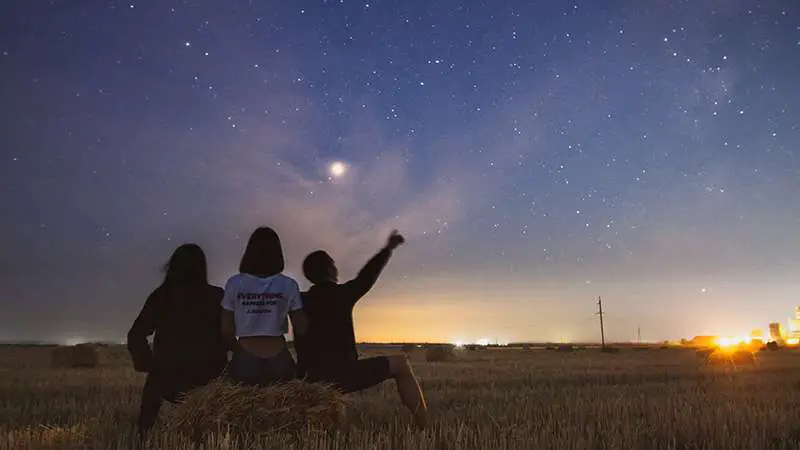
Astronomy can be a never-ending topic. Here’s where it can get as detailed as you want it to be.
For example, the Big Dipper isn’t a constellation. It’s an asterism! This means the 7 individual stars that make up the pattern of the Big Dipper actually belong to other constellations themselves.
Don’t worry though. You don’t need to know this to enjoy stargazing.
GET CREATIVE
How many other patterns can you make in the night sky?
Some of them are constellations or other asterisms. It can be fun to look at the stars or a star cluster and make up your constellations.
See what you can spot by being creative to connect the dots.
FIND OTHER BRIGHT STAR PATTERNS

The constellations are usually made up of brighter stars in the night sky. If you find a pattern of bright stars, like the Big Dipper, check your App to see if it’s a known constellation.
If you’re facing North, a popular one and relatively easy to spot is the constellation of Cassiopeia. It forms the shape of a giant W in the sky.
Cassiopeia will be near the Big Dipper, on the other side of Polaris. If you need help finding it, you can use your App. You should now be getting used to using your App, so quickly checking it to see what you’re looking at should be very easy.
I would only look at your App a little. The whole reason you’re out stargazing is to disconnect and enjoy being outside, looking up.
CAN I STARGAZE FROM HOME?
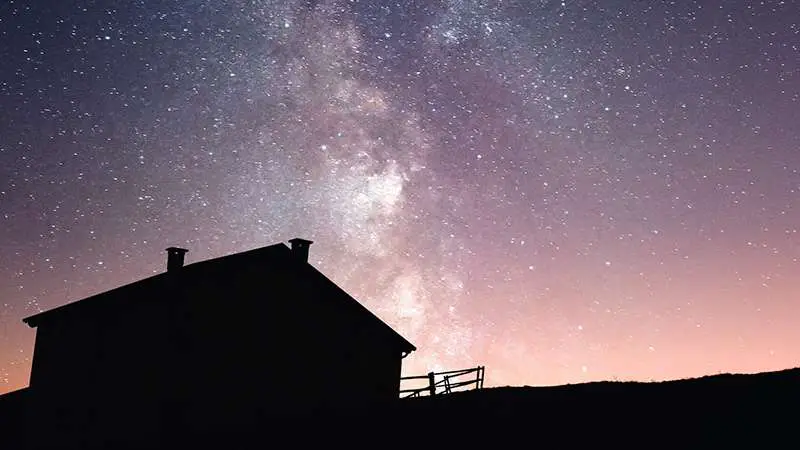
I’m often asked if you can stargaze from home. The answer is yes!
If you’re lucky, you’ll get invited to a stargazing party in someone’s backyard.
Of course, stargazing will be more difficult if you live in a very bright city like Los Angeles or New York.
TURN OFF THE LIGHTS INDOORS
Turn off the lights to minimize the light pollution for your home stargazing. This will also help your eyes adjust to the darkness to see the stars better.
TRY TO AVOID STREETLIGHTS

If you have bright streetlights right outside your home, or your neighbor’s light is shining towards your home, I recommend walking down the street a little bit.
You don’t have to go far. Just enough to eliminate the obvious (and annoying) light pollution.
MAKE SURE YOU’RE ADAPTED TO THE DARK SIDE
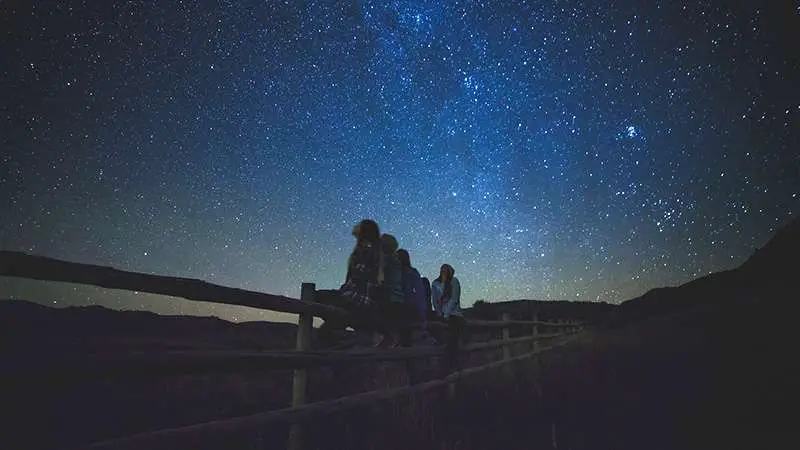
It takes your eyes about 15 minutes to adjust to night vision. Turning off the lights, getting outside, or walking down the street are all things you can do in 15 minutes to help your eyes adjust.
Don’t look at your phone’s bright screen during this time. Get ready to arrive at your destination with your eyes adjusted to the darkness.
This way, you’ll be able to see the stars. And if it’s dark enough, you’ll also see the Milky Way.
Have you ever wondered if all the stars you can see are in the Milky Way galaxy?
MAKE THE MOST OF CLEAR NIGHTS
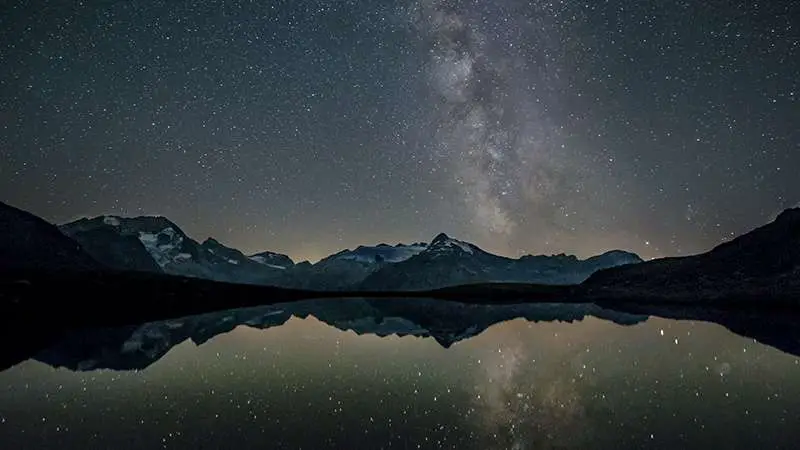
Some nights will be more clear than others. For example, if it was a windy day, the clouds may have all been blown away, leaving an amazingly clear sky.
Another example is in the wintertime. Often there are very clear nights when the stars seem to sparkly a little extra.
You can take advantage of those times by looking up.
Face North, find Polaris, the North Star. See if you can find the Big Dipper again, and then find Cassiopeia.
If you know where other constellations or planets are, from having studied your App a little by now, you can also try to find those.
GRAB A PAIR OF BINOCULARS
If you have a pair of binoculars, I recommend trying them. Take them with you on your stargazing trip.
You don’t need to go out and buy a pair just for stargazing, especially if this is your first time.
Later, and if you really get into stargazing, astronomy, or astrophotography, consider a telescope rather than a pair of binoculars.
BORROW A TELESCOPE
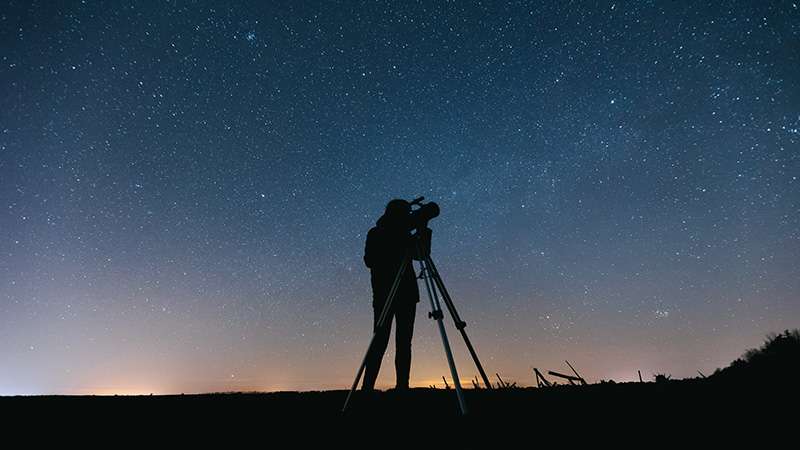
If you have a friend or neighbor who is into the night sky, they might have a telescope or know someone who does.
If they don’t, see if your town has an amateur astronomy club. They will be more than happy to help you with their telescope.
I can’t guarantee they’ll let you borrow it, but they’ll surely let you look through it.
CONCLUSION
Stargazing is a fun and easy hobby that anyone can enjoy.
You don’t need any special equipment. All you need is a clear night sky, patience, and the above stargazing tips.
If you get more into the hobby, then some equipment will help you see planets, stars, nebulae, and even galaxies that are light-years away.
Find a dark spot away from light pollution, bring the few things I mentioned above, and enjoy the show!
For some extra special places to go stargazing, read my articles Best Stargazing on Maui, Best Stargazing Oahu has to offer, and Best Stargazing on Kauai.
FREQUENTLY ASKED QUESTIONS
WHAT SHOULD A BEGINNER LOOK FOR IN ASTRONOMY?
There are many ways to get started with astronomy, but one of the most common is to observe the Moon. You can track its cycles and use binoculars or a telescope to see how it changes throughout the month.
HOW DO I START ASTRONOMY FOR BEGINNERS?
If you are new to astronomy, one of the first steps is to become familiar with the night sky. You’ll also want to get acquainted with how it changes through the night and throughout the season; different aspects of the night sky vary according to latitude. An astronomy App or free computer programs can help you view what the night sky will look like at different times of the year.
IS STARGAZING A HOBBY?
Yes, stargazing is a hobby. It can be cheap too. If you really get serious about it, buying equipment like a telescope or camera will help you see more details. It will be up to you to ensure you’re enjoying it, despite any money you may be putting towards the hobby.




